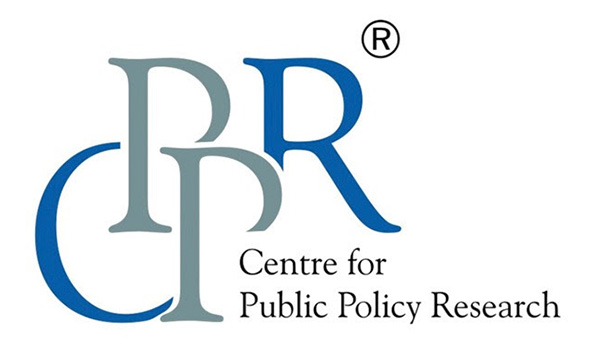CPPR in the News
Keralites call Congress centrist for a reason, they have always preferred the grand old party to come to power at the Centre, even while voting for the Left in the assembly

D Dhanuraj, CPPR Chairman, comments on the news published in The New Indian Express on 11th April, 2024.
KOCHI : The heydays of the Congress at the national level are perhaps a thing of the past. The grand old party’s vote and seat share have been taking a severe beating in recent parliament elections. But in Kerala, its performance in Lok Sabha election have remained impressive, and it has been so from the very beginning.
Even in 1977, when the Congress received severe drubbing across the country in the election held immediately after the Emergency, the party and the front it headed swept the polls in Kerala, winning all 20 seats in the state.
Keralites have shown a proclivity for the Congress in Lok Sabha elections, even while voting the Left to power in the state. For instance, when Lok Sabha and assembly elections were held simultaneously in 1996, the CPM-led LDF stormed to power winning 80 of the total 140 assembly seats. But, both the fronts won 10 seats each in the LS polls. The Congress has maintained a vote share of 30-40% in all elections in the state.
In the 2019 general election, the Congress won 15 seats with a vote share of 37.5%, while the BJP failed to secure a seat but received a vote share of 13%. The CPM fielded candidates in 14 seats, but won only one, with an overall vote share of 26%. In 2014 pollls, the Congress had contested 15, won eight and garnered 31.10% of votes. In 2009, 13 of the grand old party’s 17 candidates emerged victorious and it pocketed a vote share of 40.21%.
Even in 2004, when it suffered a huge poll debacle, Congress’ 17 candidates garnered 48,45,735 votes, for a 32.11% share of the total.
“Though the Congress faces an organisational decline at the national level, the voting pattern in Kerala shows no drastic drop in its vote share,” said political analyst J Prabhash. The state follows a voting pattern that normally favours Congress-led UDF in Lok Sabha polls and the Left in Assembly polls. However, it was not this particular voting pattern, but the absence of a third alternative that had helped the grand old party, Prabhash said.
“So far, no third major force has emerged in Kerala. The BJP, which garnered 13% of votes in the last election, has not emerged as a rival to the Congress in the state. In other states, regional parties have emerged and taken the position of the Congress, like Trinamool Congress in West Bengal, SP in UP, TDP in Andhra Pradesh and so on,” he said.

Kochi-based Centre for Public Policy Research (CPPR) founder chairman D Dhanuraj said many factors including the national political scenario helps Congress in the Parliament elections. “There were several factors, for example the ‘Rahul Gandhi effect’ that helped the party last time. However, we cannot say the Congress is organisationally strong taking into consideration only the number of seats it wins in the LS elections in the state,” he said.
In the 1957 general elections, the first after Kerala was formed, the Congress won six seats out of the total 18 seats in the state. The undivided Communist Party won nine.
The Congress won only five, one, and six seats in 1962, 1967 and 1971 elections. However, the scenario changed after the 1977 election with Congress dominating the LS polls, with a few exceptions like in 1980 after the split in the party at the national level, and in 2004.
Hand power
- Even in the elections held immediately after the Emergency in 1977, the Congress and its allies swept the polls in Kerala, winning all 20 seats
- When LS and assembly elections were held at the same time in 1996, the LDF stormed to power winning 80 of the total 140 assembly seats. But, both the fronts won 10 seats each in the LS polls
- In 2019 LS polls, the Congress won 15 seats with a vote share of 37.5%, while the BJP failed to secure a seat but received a vote share of 13%
Views expressed by the author are personal and need not reflect or represent the views of the Centre for Public Policy Research.



